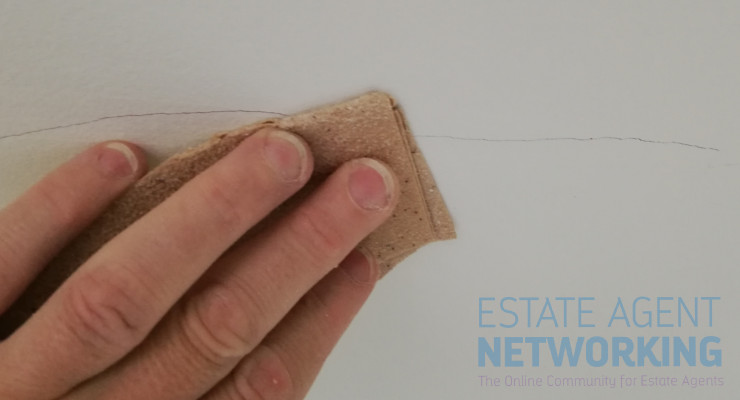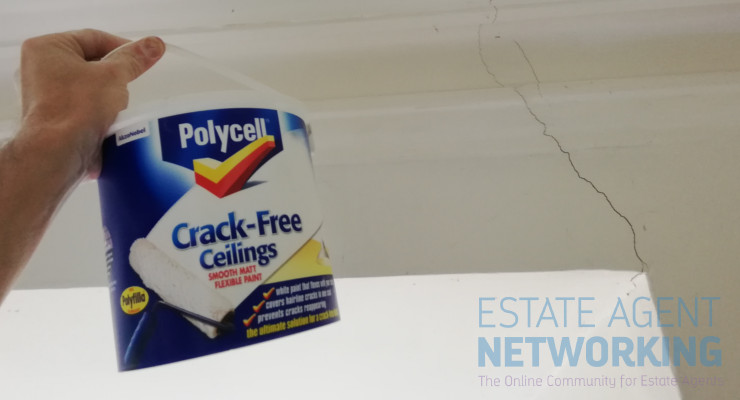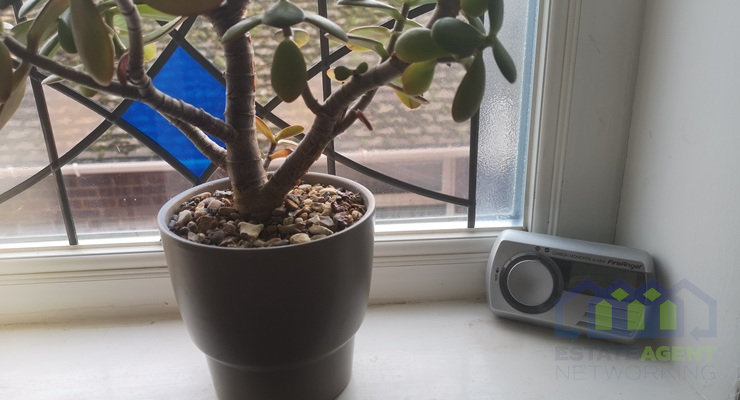Product Review: Polycell Crack-Free Ceilings
So you have those ghastly cracks in the ceiling and you are thinking to yourself how the best way to tackle them will be – Is it a few coats of paint that will do the trick, maybe some lining paper will wipe them away or you could of course simply carry on ignoring them… ?
Property of any age will show cracks that can be from those which were caused from movement to those simply because the way in which the walls / ceilings were prepared are now very dated and in need of fresh decorating! Movement cracks can be good and bad news, most houses, and those which are old especially, will have minor cracks here and there in places. New houses can also have cracks as they are built so quickly and people move in as soon as the paint is dry, movement can take place by simply adding weight such as furniture to floors.
Ceiling cracks are always the hardest to deal with as you will likely need ladders and suffer with a bad neck for a few days after. Ceilings will generally need a whole fresh covering rather than you trying to repair and cover a small patch as these will easily stand out.
Cracks of course come in all shapes and sizes from hairline to those larger cracks into the mm’s and cm’s. What you must also remember with cracks, especially for newer property, is that they may still be growing as such, the movement may have not yet stopped so what you repair now may once again rear its ugly head in a few months time. For older properties it is more likely that the crack you see is what you have to tackle unless of course the cracks are structural such as those due to subsidence.
How to treat cracks in the ceiling
For this review we are looking at the Polycell Crack-Free Ceilings paint that states itself as being a remedy for such issues. A trustworthy and recognisable brand name with a somewhat costly (£20 – £25 for a 2.5L pot) expandable paint option to cover ceiling cracks.
Firstly I will advise you that it is not simply the case you will paint over the cracks as such, though the paint is expandable and open to a slight bit of movement it is not a direct solution. If you want the best results then the following procedure will likely get you the finish you are after and make those cracks disappear:

Whichever surface you wish to decorate you will need to prepare so when using the Polycell Crack-Free Ceilings you should rub down the surface initially.

Once you can see the full extent of the crack you will be required to fill with plaster which will mean digging out the crack if it is large enough and then getting some plaster in to those gaps. Once you have applied plaster you will then need to rub down once again and repeat if needed so the surface is nice an even. If the cracks are very minor and hairline then you might be able to bypass the need for plastering, I took the option of plastering all the cracks in the room I tested this product with so to be on the safe side (I left one hairline crack without plaster to test this option).

Once the surface was ready I applied one coat of the Polycell Crack-Free Ceilings on to what was already painted white previously. The paint was a good thickness and certainly felt as it it applied with a thick coat and spread evenly. Note that a good thick quality paint brush is advised here with a diameter of around 50mm so medium sized.
After one week I revisited the area where there were previously cracks including the hairline crack which I had not treated with plaster. So far all cracks are covered and no cracks are re-showing.
Do I recommend Polycell Crack-Free Ceilings?
Preparations are always key in decorating, the more time you spend preparing surfaces then the better the final results you will see. In this product review the paint was not put through a vigorous test as to be honest this is not the correct way in which you should be decorating – I felt the best test for this product was to see how it performs with cracks that are treated and only minor hairline cracks for it to tackle face on. Over time if the cracks have only a minor expansion, no more than 0.1 mm / 100μm, then this paint should perform well in hiding them by way of expansion.









